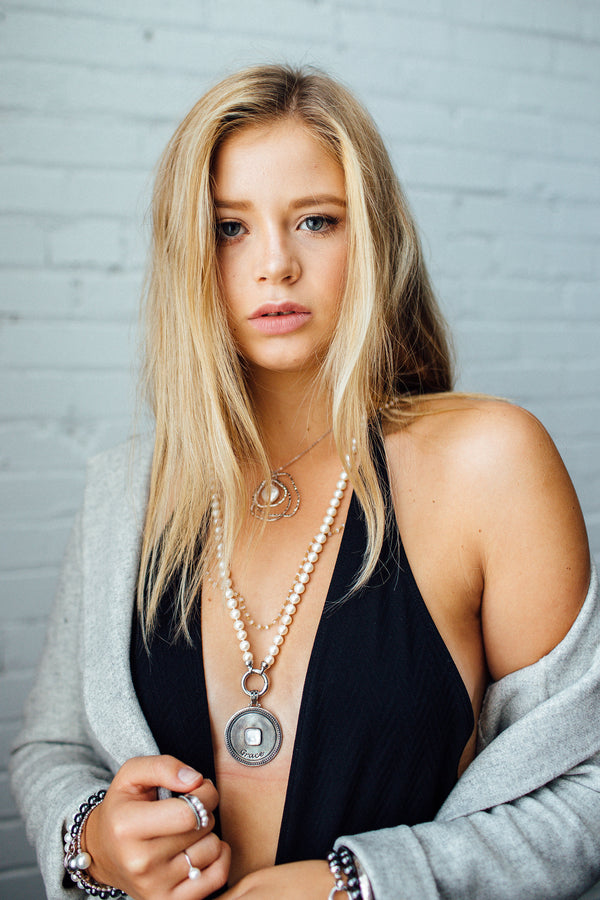May 04, 2016
noun: jewellery
/jōō(ǝ)lrēy : personal ornament, such as necklaces, rings or bracelets, that are typically made from or contain jewels, pearls, precious metals and are distinguished by very fine designs and craftsmanship
__________________________
Have you ever wondered about the symbolic meaning of jewellery? We are all connected. Through time and across diverse cultures humans have worn jewellery as a universal way to communicate. The meanings are as different as the people wearing the jewellery; love, adornment, protection, fertility or as a symbol of rank, or status.
The history of jewellery dates back to man’s earliest documented time on earth. Jewellery made from shells, stone and bones survives from prehistoric times. In the ancient world the discovery of how to work metals was an important stage in the development of the art of jewellery.[i]
There have been many interesting changes in taste, style and symbolic meaning of jewellery from prehistoric man to today. Influences from Medieval and Renaissance times are still prominently reflected. Designs reflecting the importance of religion and earthly powers are as popular today as they were in the 17th century.
A major milestone in the timeline of jewellery was the development of the ‘brilliant cut’ with its multi-facets; diamonds came to life and sparkled in light! The 18th century saw diamonds come to dominate jewellery design. The industrial and social shifts of the 19th century brought a renewed interest in the past. Ancient techniques such as enamel are used by artisans today.
Global influences from Middle East, Europe, Asia, North & South America, Native American and African cultures and artisans are blending to create jewellery that appeals to people from varied backgrounds; sharing the language of design, artistry and colour to create ways for people to tell and share their own unique story.
Materials previously deemed inaccessible or exclusively for the elite are now readily available in their original or reproduced forms. Fine and fashion jewellery are exquisitely layered and worn together. Jewellery has been made to adorn nearly every body part, from hairpins to toe rings. Body modifications have become common place. Modern culture encourages men and women to wear jewellery as a way to reflect who they are – tell their story.
The history of jewellery is as long and as diverse as those who create and wear it. Today’s commercial jewellery continues the movement of traditional forms and styles while growing the movement of ‘wearable art’. Form, function, materials and methods will always evolve. Jewellery has different uses and meanings among different cultures. It has endured for thousands of years and has provided various insights into how ancient cultures worked.[ii]
At MeganKyle our designers and their designs are part of this exciting story. While our role is humble we are proud to create, contribute and connect people through the telling of their story by wearing our pieces. Like a tapestry each piece of jewellery is a thread; perhaps insignificant on its own but when combined with other threads weaves a picture to be shared.
Cheers,
Lorraine
Fun Facts:
~ Diamonds were first mined in India
~ The use of diamonds in an engagement ring dates back to the marriage of Maximilian I to Mary of Burgundy in 1477
~ Since 2005 Australia, Botswana, Russia & Canada ranked among the primary sources of gemstone diamond production
[i] "Victoria and Albert Museum.", Online Museum, Web Team, Webmaster@vam.ac.uk. Victoria and Albert Museum. Web. 2 Nov. 2015.
[ii] Wikipedia. Wikimedia Foundation. Web. 3 Nov. 2015.

SAVE 15% ON YOUR 1ST ORDER
JOIN THE MEGANKYLE STYLE FAMILY
As a member, you will be the first to hear about our latest collections, news, events and exclusive promotions.